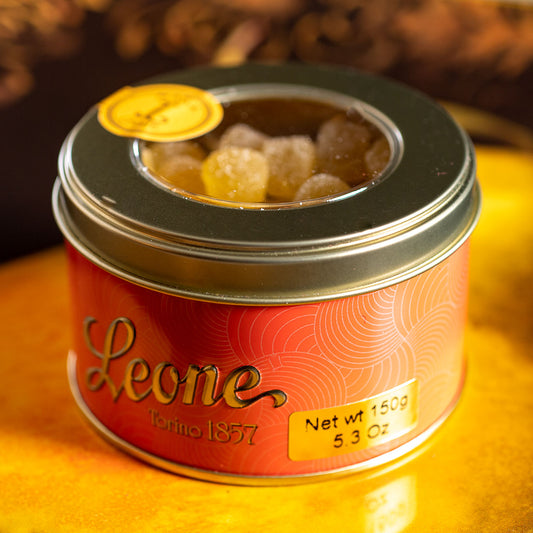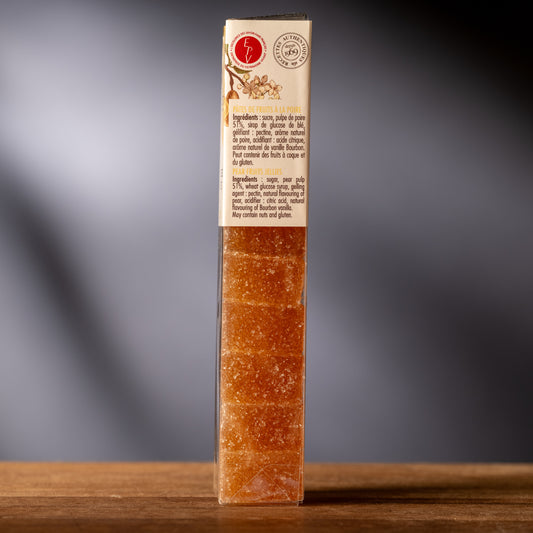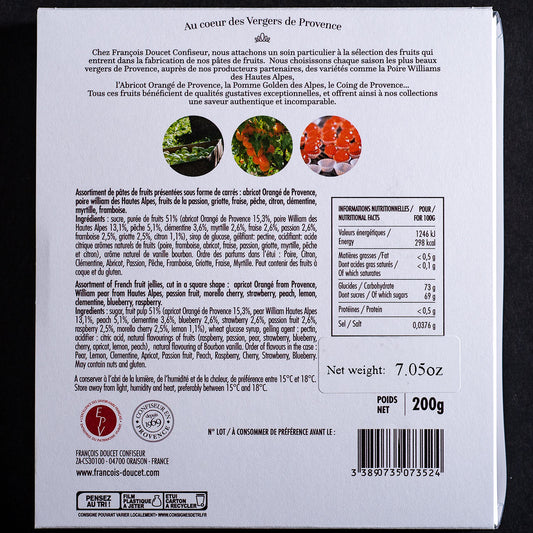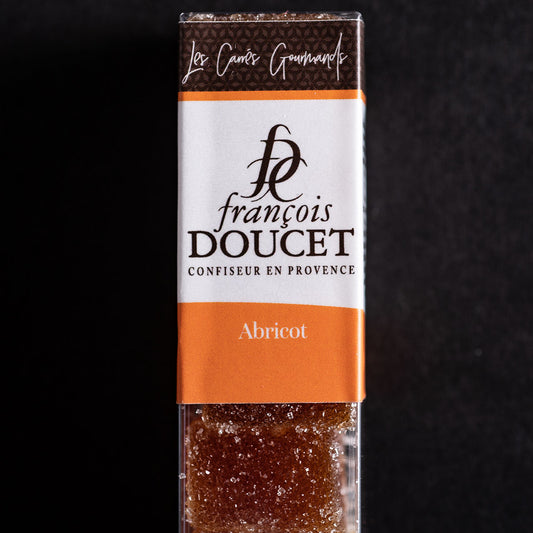Pates de Fruit - Fruit Jellies
about Pates de Fruit - Fruit Jellies: click here to read more
Pâté de fruit is a type of traditional French confectionery that consists of fruit paste or fruit jelly, often made from puréed fruit, sugar, and pectin, and set into a firm, chewy texture. These fruit pastes are typically cut into small cubes or shapes and dusted with sugar to create a delicate, bite-sized treat. Pâté de fruit is known for its intense, natural fruit flavor and vibrant color, which is derived from the fruit pulp used in its making.
How is Pâté de Fruit Made?
The process of making pâté de fruit involves several key steps:
Fruit Purée: Fresh fruit, such as raspberries, apricots, or quince, is puréed to create a smooth base for the candy. The fruit purée is typically strained to remove seeds and fibers.
Sugar and Pectin: Sugar is added to the purée to help the mixture set, while pectin (a natural gelling agent found in fruit) is used to help the mixture firm up. The exact amount of sugar and pectin will depend on the type of fruit being used and its natural pectin content.
Cooking: The fruit purée, sugar, and pectin are boiled together until the mixture thickens into a gel-like consistency. This step requires careful attention to prevent burning and to ensure the right texture.
Setting: Once the mixture reaches the desired thickness, it's poured into molds to set. The mixture is left to cool and solidify into a firm, jelly-like consistency.
Cutting and Coating: After setting, the pâté de fruit is removed from the mold, cut into cubes or other shapes, and dusted with sugar to prevent it from sticking and to add a little extra sweetness.
Pâté de fruit is prized for its natural, bright flavors and is often made with fruit varieties that have a high pectin content, such as apples, quince, and certain berries, which allow the jelly to set well without the need for excessive added gelling agents.
Pâté de fruit is believed to have originated in France and has been a part of French confectionery traditions for centuries. The precise historical origins of pâté de fruit are not fully documented, but it is closely related to other European traditions of fruit preserves and jellies.
The technique of cooking fruit with sugar to create a preserve is ancient and was commonly practiced in Europe, particularly during the Middle Ages, when fruit was often preserved for the winter months.
The name "pâté de fruit" likely originated in the 18th century or earlier, though the exact time is unclear. Historically, French confectioners would have used a variety of fruits, depending on what was available, to create sweet fruit pastes and jellies. These sweets were typically enjoyed by the aristocracy and were often served as a luxury treat.
The modern version of pâté de fruit, which involves a precise, controlled method of making fruit jellies with a firm texture, became more defined and popularized in France during the 19th century. French pastry chefs began perfecting the technique, and it became a common offering in patisseries and confectioneries throughout the country.
-
Francois Doucet Poire 9 Pear Pates De Fruits
Regular price $15.55 USDRegular priceUnit price / per$0.00 USDSale price $15.55 USD -
Francois Doucet Pates De Fruits - 9 Strawberry
Regular price $15.55 USDRegular priceUnit price / per$0.00 USDSale price $15.55 USD -
Francois Doucet Pâtes de Fruits - 20 Assorted
Regular price $27.95 USDRegular priceUnit price / per$0.00 USDSale price $27.95 USD -
Mon Pari Pates De Fruit - France
Regular price $21.95 USDRegular priceUnit price / per$0.00 USDSale price $21.95 USD -
Francois Doucet Abricot Pates de Fruits - 9 Apricot
Regular price $15.55 USDRegular priceUnit price / per$0.00 USDSale price $15.55 USD -
Francois Doucet Framboise Pates de Fruits - 9 Raspberry
Regular price $15.55 USDRegular priceUnit price / per$0.00 USDSale price $15.55 USD -
Mon Pari French Fruit Jellies - Pates de Fruits - 9 Piece Square
Regular price $14.95 USDRegular priceUnit price / per$0.00 USDSale price $14.95 USD -
 Restocking - choose Notify me
Restocking - choose Notify meLeone Blood Orange Fruit Jelly Drops in a Tin
Regular price $19.95 USDRegular priceUnit price / per$0.00 USDSale price $19.95 USDRestocking - choose Notify me -

 Restocking - choose Notify me
Restocking - choose Notify meLeone Lemon Fruit Jelly Drops in Tin
Regular price $19.95 USDRegular priceUnit price / per$0.00 USDSale price $19.95 USDRestocking - choose Notify me













